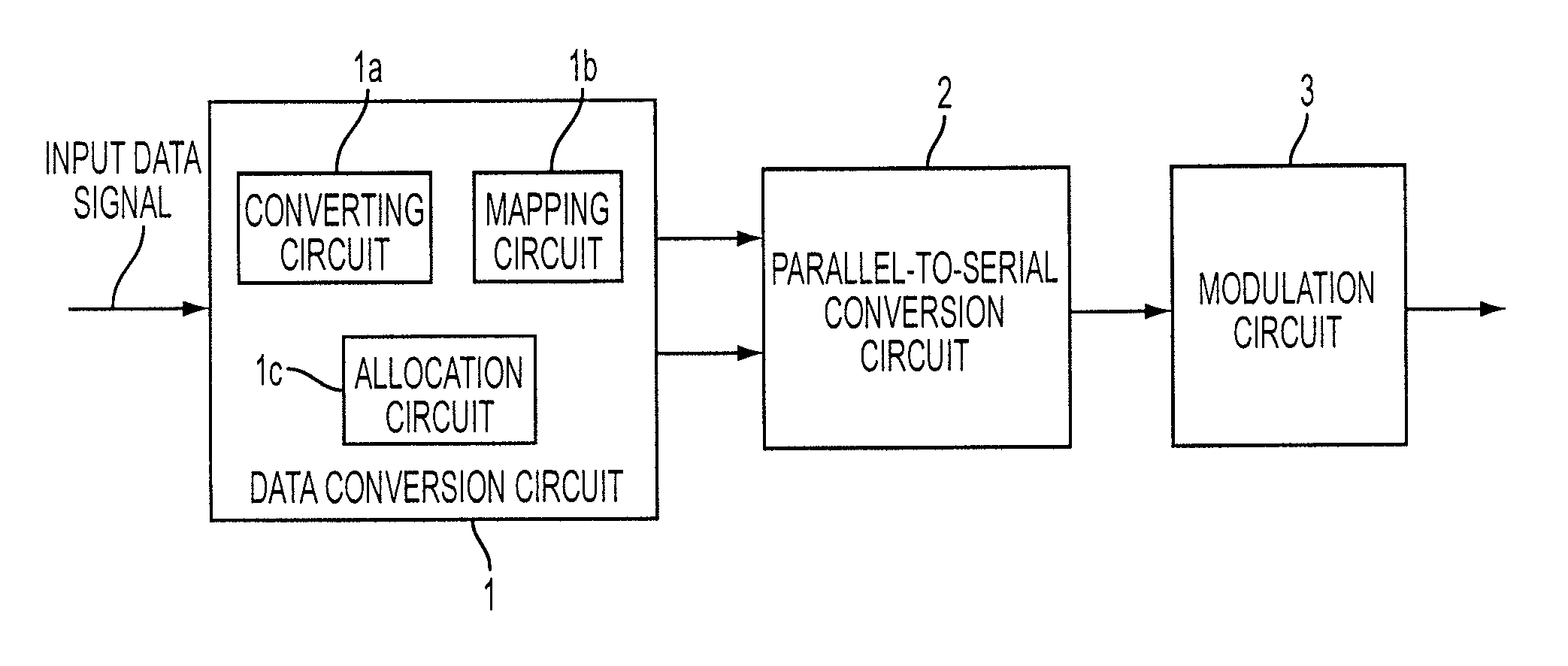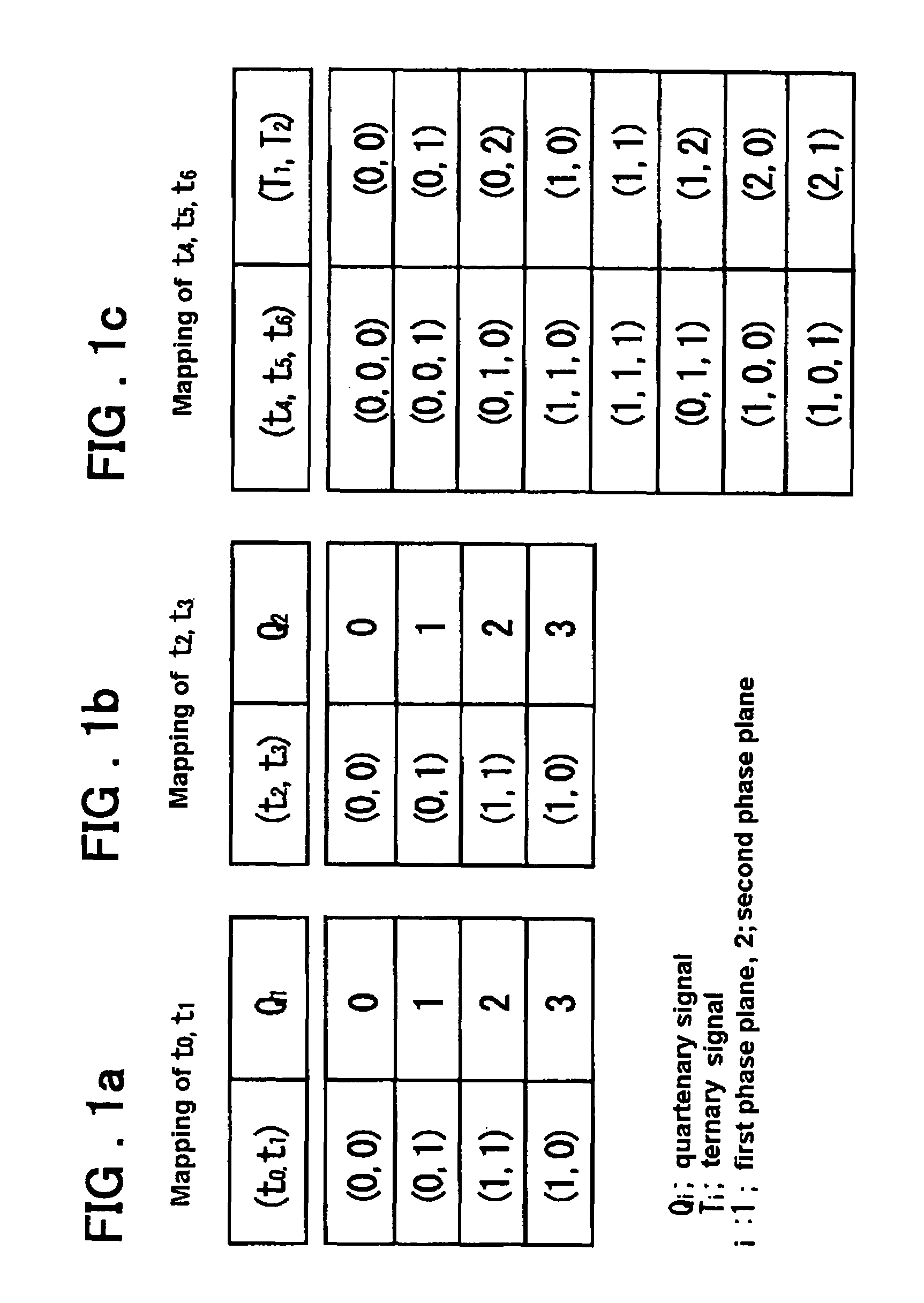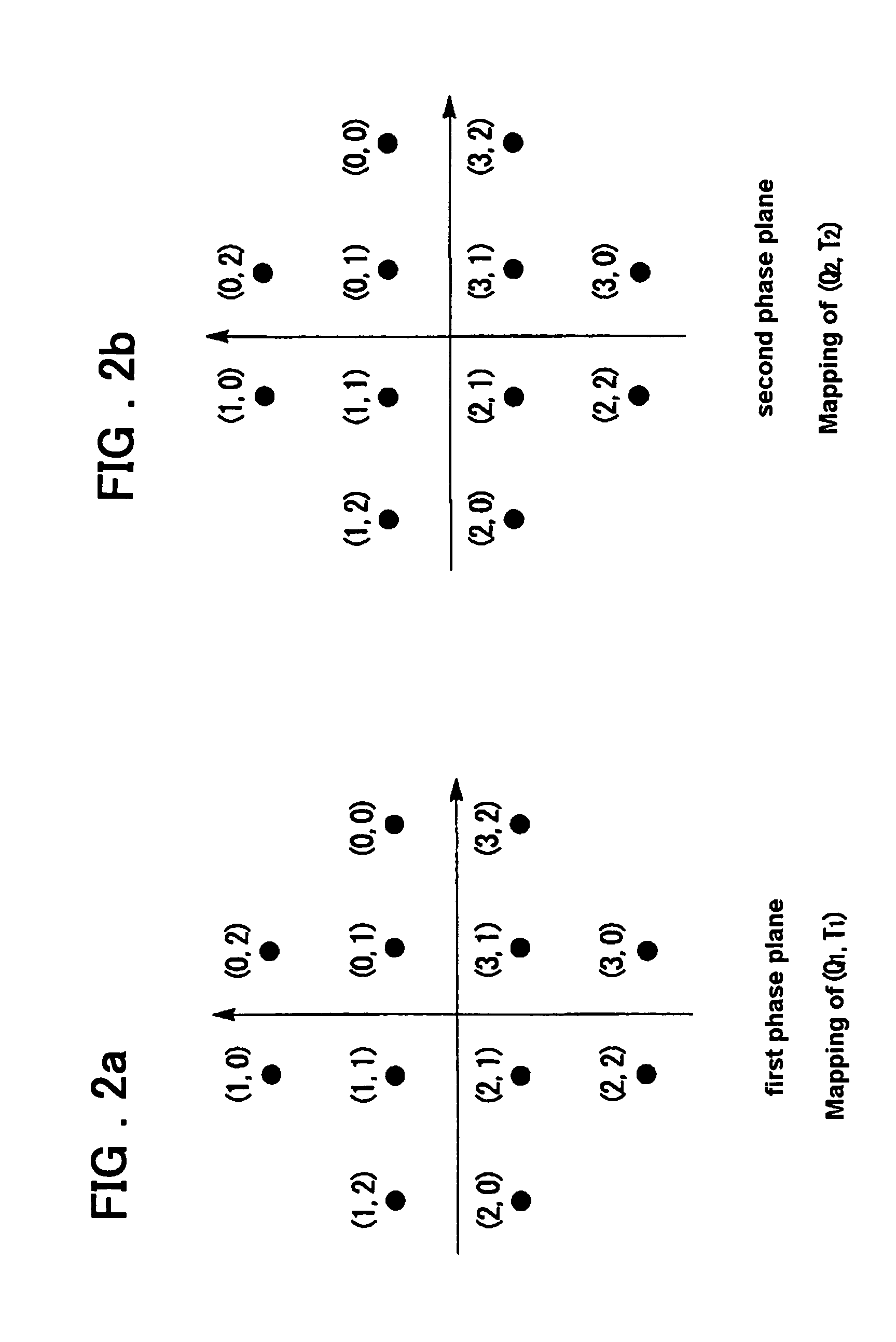Multi-level modulation method and system
a multi-level modulation and multi-level technology, applied in the field of multi-level modulation methods and systems, can solve problems such as complexity of circuitry, and achieve the effect of reducing bit errors against symbol errors
- Summary
- Abstract
- Description
- Claims
- Application Information
AI Technical Summary
Benefits of technology
Problems solved by technology
Method used
Image
Examples
first embodiment
[0074]An N-ary modulation method in accordance with the present invention, in which a binary signal with a specified bit length n, is associated with N-ary signals arranged in first and second phase planes, N being not a number belonging to powers of 2, such as 4, 16, 64 or 256, but being a number such as 12, 24, 48 or 96, and n being such that, when n is 7, 9, 11, 13, . . . , the number N is 12, 24, 48 or 96, . . . , respectively, in which the method comprises the steps of:
[0075]allocating two of the n bits for identifying four quadrants of the first phase plane;
[0076]allocating two of the remaining (n−2) bits for identifying four quadrants of the second phase plane; and
[0077]allocating two of the remaining (n−4) bits for identifying four quadrants of the third phase plane.
[0078]According to the present invention, in allocating three of the (n−4) bits to two digits of ternary signals, in mapping the (n−4) bits to two digits of ternary signals to the first and second phase planes wi...
second embodiment
[0100]As the present invention, the encoding of 9-bit binary signal, in case of application to 24QAM, is shown in FIGS. 3a and 3b. FIGS. 4a and 4b shows an embodiment of mapping the codes shown in FIGS. 3a and 3b to two phase planes.
[0101]With 24QAM, 9-bit signals of t0, t1, t2, t3, t4, t5, t6, t7 and t8 are sub-divided into three groups (t0, t1), (t2, t3), t4, t5 and (t6, t7, t8). (t0, t1) is associated with Q1, (t2, t3) is associated with Q2, t4 is associated with B1, t5 is associated with B2 and (t6, t7, t8) is associated with (T1, T2).
[0102]Q1 and Q2, are associated with quadrant signals of the first and second phase planes, four-ary, and are Gray-coded.
[0103]B1 and B2 are associated with the intra-quadrant signals of the first and second phase planes and are binary.
[0104]T1 and T2 represent intra-quadrant signals of the first and second phase planes and are ternary. T1 and T2, undergo encoding which has correlation in the two phase planes, and are encoded in such a fashion that...
third embodiment
[0112]In addition, in the present invention, two out of the n bits are allocated for identifying the four quadrants of the first phase plane, and two out of the remaining (n−2) bits are allocated for identifying the four quadrants of the second phase plane.
[0113]In a modification of the third embodiment of the present invention, ternary signals may be mapped to the first and second phase planes with axial symmetry.
PUM
 Login to View More
Login to View More Abstract
Description
Claims
Application Information
 Login to View More
Login to View More - R&D
- Intellectual Property
- Life Sciences
- Materials
- Tech Scout
- Unparalleled Data Quality
- Higher Quality Content
- 60% Fewer Hallucinations
Browse by: Latest US Patents, China's latest patents, Technical Efficacy Thesaurus, Application Domain, Technology Topic, Popular Technical Reports.
© 2025 PatSnap. All rights reserved.Legal|Privacy policy|Modern Slavery Act Transparency Statement|Sitemap|About US| Contact US: help@patsnap.com



